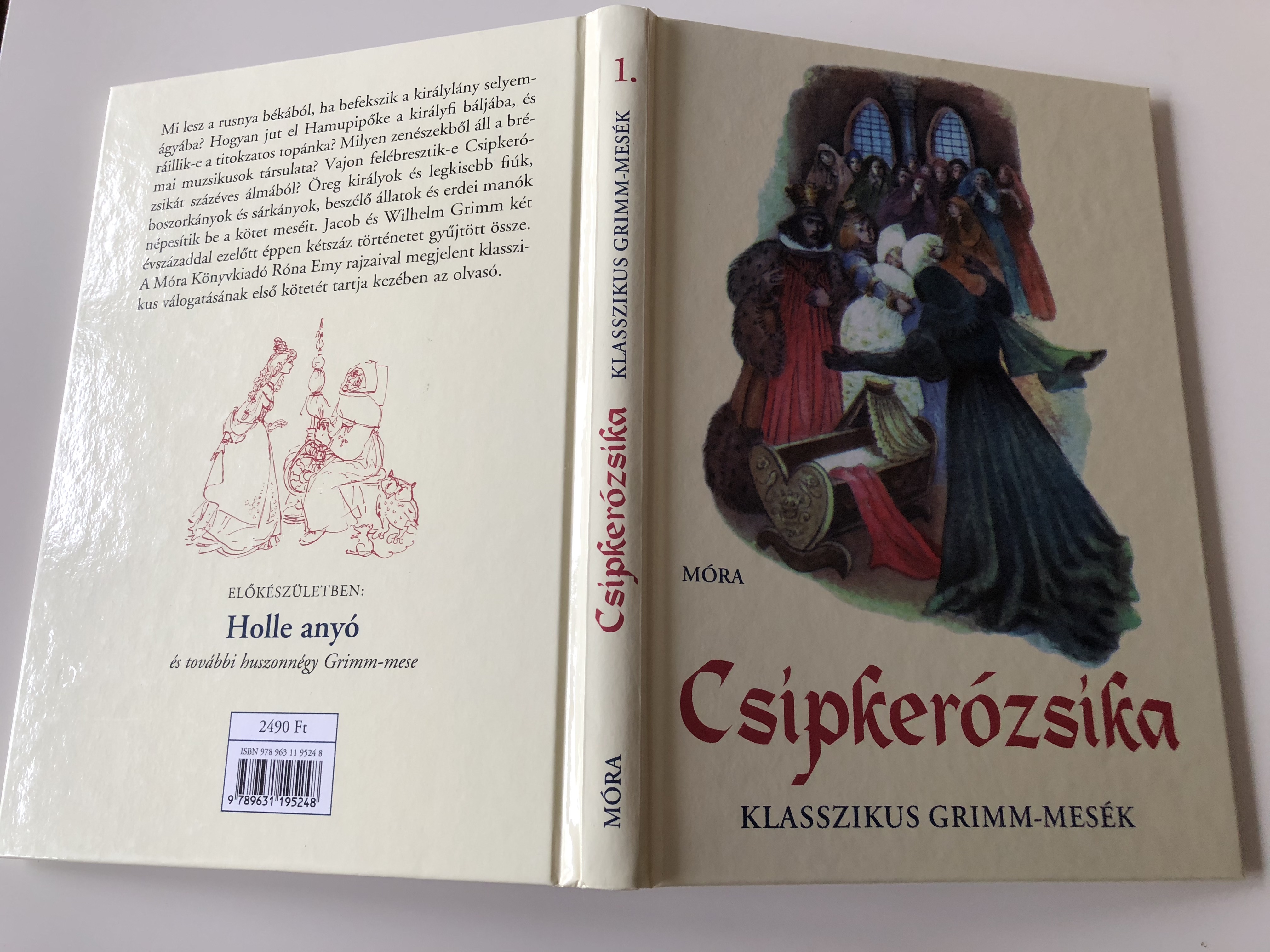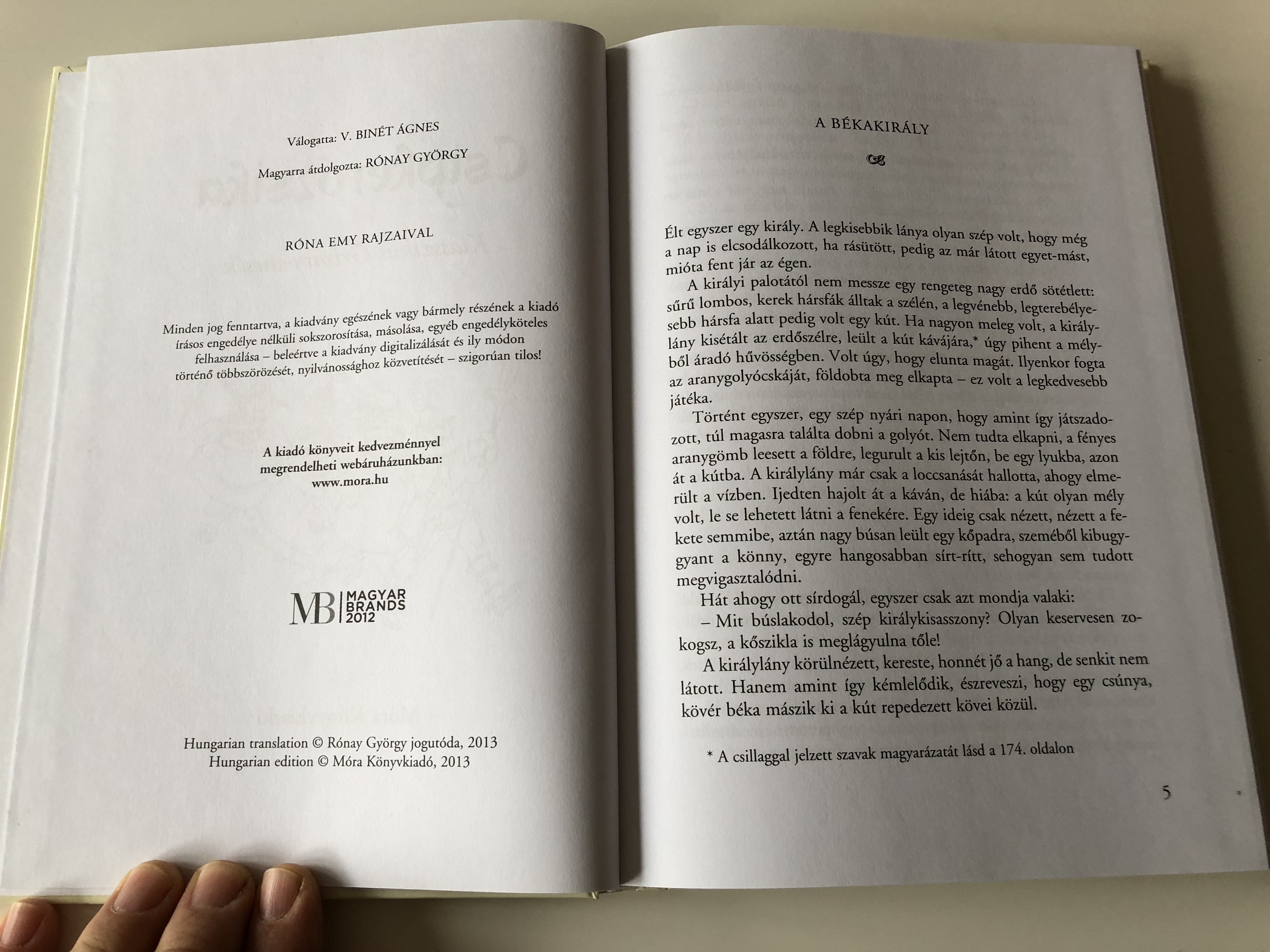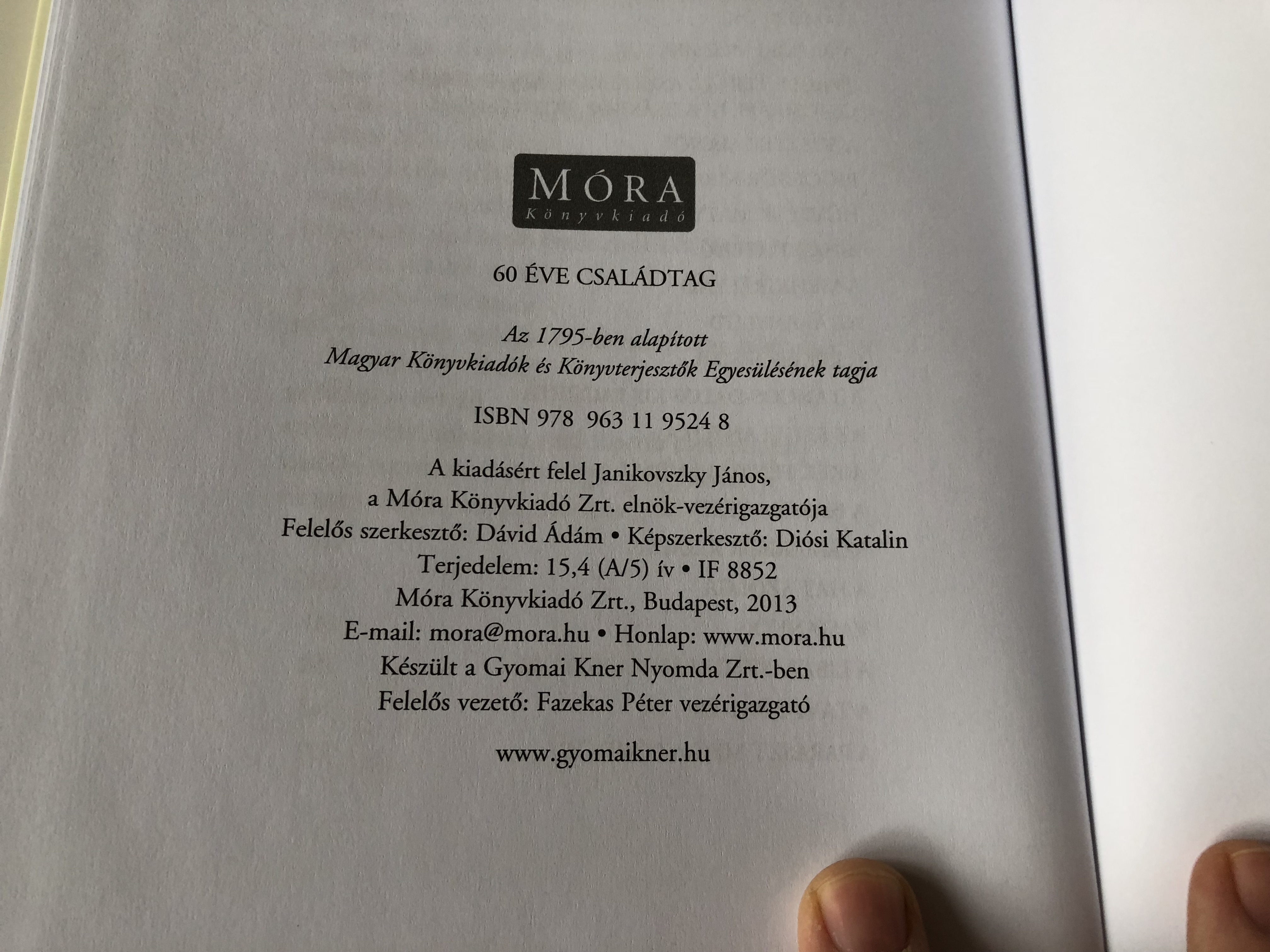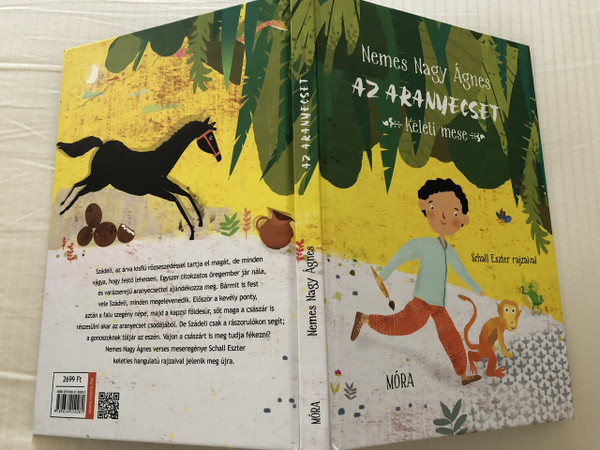Description
Csipkerózsika – Sleeping Beauty and Other Fairy Tales
Válogatta V. Binét Ágnes / Fordította Rónay György / Illustrated by Róna Emy
Product Details / Termékadatok
- Authors / Szerzők: Jakob Grimm, Wilhelm Grimm
- Editor / Válogatta: V. Binét Ágnes
- Translator / Fordította: Rónay György
- Illustrator / Illusztrátor: Róna Emy
- Publisher / Kiadó: Móra Ferenc Ifjúsági Könyvkiadó Zrt.
- Language / Nyelv: Hungarian / Magyar
- ISBN-13: 9789631195248 / 978-9631195248
- Publication Year / Megjelenés: 2013
- Binding / Kötés: Hardcover, sewn-bound / Cérnafűzött, keménytáblás
- Page Count / Oldalszám: 176 pages / 176 oldal
- Dimensions / Méret [mm]: 170 x 241 x 16
- Weight / Tömeg [g]: 460
Overview / Áttekintés
Hungarian / Magyar:
A Csipkerózsika és más klasszikus Grimm-mesék ebben a gyönyörű kötetben Rónay György fordításában és Róna Emy varázslatos illusztrációival kelnek életre.
Ebben a gyűjteményben boszorkányok, királylányok, legkisebb fiúk, beszélő állatok és varázslatos lények népesítik be a történeteket. Az olvasók Hamupipőke, Csipkerózsika, A brémai muzsikusok és sok más időtlen mese történetével találkozhatnak, amelyeket a Grimm testvérek két évszázaddal ezelőtt gyűjtöttek össze.
A mesék kalandosak, tanulságosak és örökérvényűek, generációk óta szórakoztatják és tanítják a gyermekeket világszerte. Ez a kiadás egy igazi klasszikus gyűjtemény, amely méltó helyet érdemel minden gyermek könyvespolcán.
English:
Sleeping Beauty and Other Fairy Tales is a beautifully illustrated collection of classic Grimm fairy tales, brought to life in Rónay György’s elegant Hungarian translation and Róna Emy’s enchanting artwork.
This collection is filled with witches, princesses, brave young heroes, talking animals, and magical creatures. Readers will find beloved stories such as Cinderella, Sleeping Beauty, The Bremen Town Musicians, and many more. The Grimm Brothers compiled these tales over two centuries ago, preserving some of the most treasured fairy tales in history.
These stories are exciting, timeless, and rich in life lessons, captivating children and adults alike across generations. This edition is a must-have classic collection that belongs on every child's bookshelf.
Product Features / Termékjellemzők
- A collection of the most beloved fairy tales by the Brothers Grimm
- Features timeless stories like Sleeping Beauty, Cinderella, and The Bremen Town Musicians
- Beautifully illustrated by Róna Emy
- Captivating Hungarian translation by Rónay György
-
A perfect gift book for children and classic literature lovers
-
A Grimm testvérek legismertebb meséinek gyűjteménye
- Olyan klasszikus mesékkel, mint a Csipkerózsika, Hamupipőke és A brémai muzsikusok
- Róna Emy csodálatos illusztrációival
- Rónay György lebilincselő magyar fordításában
- Tökéletes ajándék gyermekeknek és klasszikus irodalomkedvelőknek
Interesting Facts / Érdekes Tények
- Hungarian: A Grimm testvérek meséit több mint 100 nyelvre lefordították, és olyan világhírű történeteket tartalmaznak, mint a Hófehérke, A békakirályfi és Piroska és a farkas.
- English: The Grimm Brothers’ fairy tales have been translated into over 100 languages, featuring world-famous stories like Snow White, The Frog Prince, and Little Red Riding Hood.
About the Grimm Brothers / A Grimm testvérekről
Hungarian:
Jakob Grimm (1785–1863) és Wilhelm Grimm (1786–1859) német mesegyűjtők, nyelvészek és irodalmárok voltak, akik a Gyermek- és családi mesék (Kinder- und Hausmärchen) című gyűjteményükkel örökre megváltoztatták az irodalom világát. Meséik, mint a Csipkerózsika, Hamupipőke és Jancsi és Juliska, a világ minden táján ismertté váltak.
English:
Jakob Grimm (1785–1863) and Wilhelm Grimm (1786–1859) were German folklorists, linguists, and literary scholars, best known for compiling the Children’s and Household Tales (Kinder- und Hausmärchen), one of the most influential fairy tale collections in history. Their stories, including Sleeping Beauty, Cinderella, and Hansel and Gretel, have become legendary worldwide.
Publishers / Kiadó
Published by Móra Ferenc Ifjúsági Könyvkiadó Zrt. in 2013.
Kiadó: Móra Ferenc Ifjúsági Könyvkiadó Zrt., 2013.





































